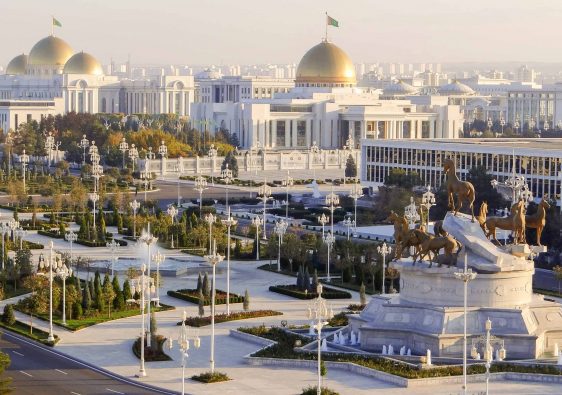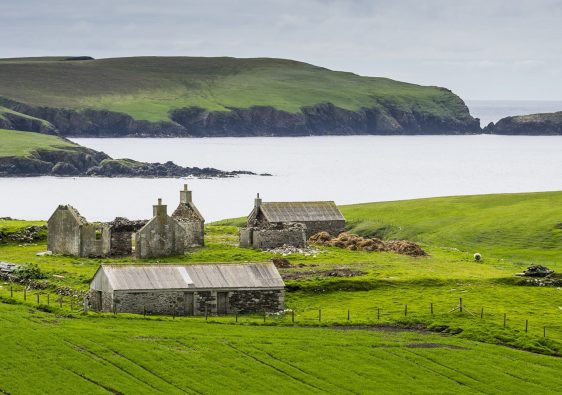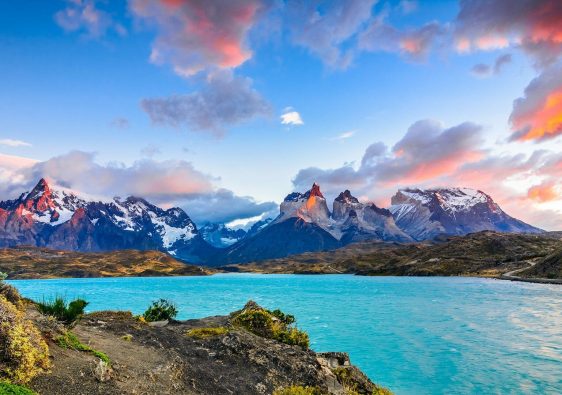Located in the northeast of the country, Issyk-Kul borders with Kazakhstan on the northeast, with China on the southeast, with the Naryn region on the southwest, and with the Chuy region on the northwest.
Within the borders of the Chui region, there is the famous Issyk-Kul lake that is one of the largest mountain lakes in the world which does not freeze even in the most severe winters. Issyk-Kul region is the most visited region of Kyrgyzstan where the main attraction of the region is Issyk-Kul Lake that is again one of the deepest and largest lakes in the world, located in the middle of the picturesque Tien Shan Mountains.
Also in the Issyk-Kul region are the highest mountains of the country: the famous peak of Khan-Tengri and the highest point of Kyrgyzstan – the Pobeda Peak. That’s why Issyk-Kul is a pearl of Central Asia. But now it is time to find out some of the amazing places to visit in Issyk Kul. So, let get started.
Here are the 12 Best Places to Visit in Issyk Kul:
1. Jeti Oguz Gorge

Located 28 kilometers to the southwest of the town of Karakol, Jeti Oguz Gorge is a picturesque sandstone formation whose name in Kyrgyz means “Seven Bulls” and is symbolic of the 35 km long wall of huge, red-brown cliffs that resemble seven furious bulls standing in a file together.
The Jaralangan Jurok (Broken Heart Rock), located at the entrance to the gorge, is especially aesthetically romantic. Legend says that this is the heart of a beautiful woman who died of a broken heart after two suitors killed each other fighting over her. These two rock formations have become symbols of the Issyk-Kul region and are favorite images for photographs and paintings.
Jeti-Oguz is also famous for its hot springs with radon and hydrogen sulfide-enriched water. At the springhead, where the water emerges from underground at an altitude of 2200 m, there is a resort. The water in these springs is useful for the treatment of rheumatism, as well as gastric and nervous diseases. So, don’t miss to visit.
2. Ak-Suu Gorge
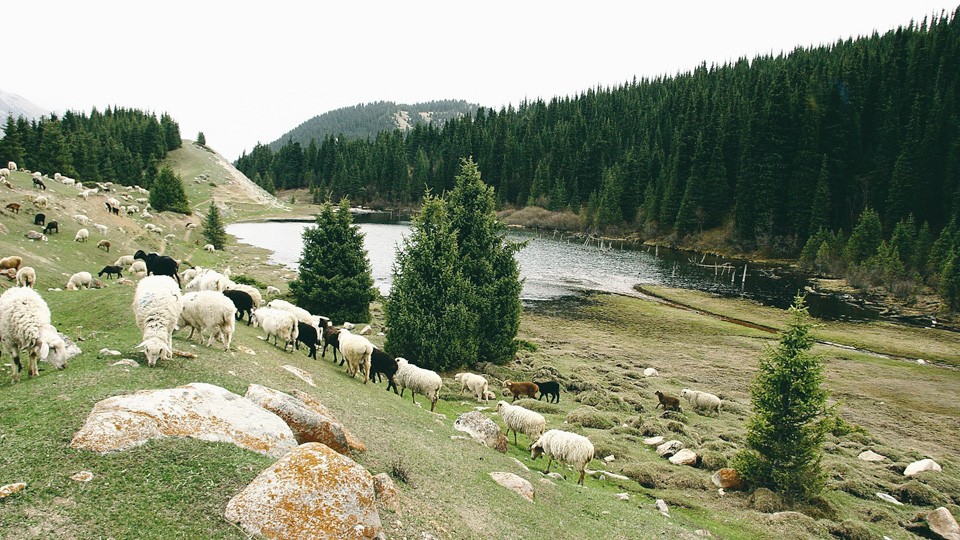
Also called the Semenov Gorge, Ak-Suu Gorge has located 40 km from Cholpon-Ata. The length of the gorge is about 30 km and the river called Kichi Ak-Suu runs through the bottom of the gorge.
Gray and reddish granites cover the bottom: the rapid river flow beats into white foam, that’s why the name of the river is Ak-Suu which means “White River”. The slopes of the gorge are covered with Tien Shan fir trees and fragrant mountain herbs.
“Aksu” resort is located a few kilometers from the reserve, housing a sanatorium, and about 30 thermal radon sources. It treats diseases of the central nervous system, in particular, ICP – cerebral palsy. After the resort, the gorge widens, and the famous gigantic Tien-Shan first appears on the slopes in its lower part.
Further, you see two stunningly beautiful waterfalls 25 and 30 m high. Slender spruce trees grow on waterfalls’ both sides, complementing the fascinating picture of falling water with lively green colors. There is also a moraine-glacial lake Kashka-Suu with clean meltwater.
One of the most famous sights of the gorge is the huge trapezoid Aksu wall covered with ice and reaching the highest point of 5022 m. that’s what makes Ak-Suu Gorge one of the most popular places for mountain hiking adventures.
3. Tuz-Kol

Located on the southern shore of Issyk Kul Lake, near the village of Kara-Koo, 1609 meters above sea level, Tuz-Kol which is also named as Kara Kol, meaning ‘dead lake’ is the saltiest lake in Kyrgyzstan with a perimeter of 1500 meters and depth of 11 meters.
It is 1 km long and 0,5 wide and possesses unique mud that is believed to have healing properties. This lake is often compared to the Dead Sea in Israel.
The water in the lake is so dense that swimming in it is like floating. Now some fact about this lake – According to scientific data, the amount of salt in the lake is 132 grams per liter. The high concentration of salt helps cure many diseases, such as psoriasis and other dermatological, gynecological, and musculoskeletal diseases.
The silt mud along the coast formed as a result of microorganism activities has long been used for therapeutic and cosmetic purposes. So, if you want to get some health benefits then I would highly recommend you to visit this dead lake of Kyrgyzstan.
4. Ala-Kul Lake

Situated at the altitude of 3532 m in the pass of the same name, the pearl of Terskey Ala-Too hidden high in the mountains is a glacial lake Ala-Kul Lake. Although the surface area of this glacial lake is just under 1.5 km2, the waters reach a depth of more than 70 meters.
This is a motley lake, its colors entirely contingent on the weather. Lake Ala-Kul is situated in a colorful bowl of rocky ridges with white tops. There are two ways to get to the lake: through the pass or traveling from the valley Altyn-Arashan. This natural lake is a place regularly sought-after by hikers who come to explore the region.
Nestled in the mountains, the glacial Ala-Kul Lake is magnificent but can only be reached by hike. Its beauty is renowned to travelers and has become a popular destination for hikers.
The picturesque hike offers the opportunity to meet some wild animals, herds of yaks or sheep, and cross some shepherd’s yurts. From the Ala Kul Pass, you will have a breathtaking view of the Karakol, Djiguit, and Oguz Bashi peaks.
The unspoiled nature that surrounds the lake will leave you speechless and give you the opportunity to meditate and relax. So, don’t miss it.
5. Sarychat-Eеrtash State Reserve
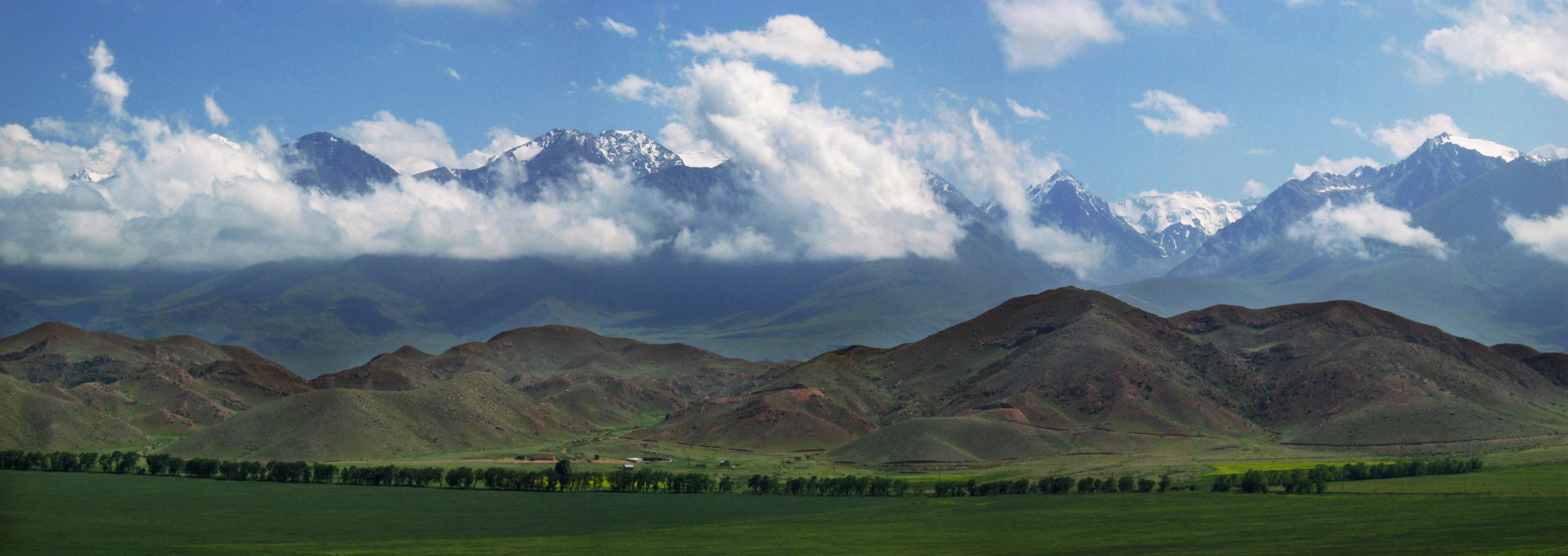
Situated in the Jeti-Oguz district of the Issyk-Kul province, Sarychat-Eеrtash State Reserve is a flagship protected area, located high in the Tien Shan Mountains of Kyrgyzstan covering the basins of the Sarychat and Bordu rivers on the southern slope of Teskei Ala-Too.
This 150,000-hectare nature reserve is a key site for snow leopards and is also home to other important alpine species such as Marco Polo sheep and ibex. The primary task of the reserve is the preservation of the alpine ecosystems and endangered species.
So, if you want to witness some mountain sheep, alpine ibex, snow leopards, etc. then don’t forget to explore Sarychat-Eеrtash State Reserve.
6. Fairy Tale Canyon

Located on the southern shore of Issyk-Kul Lake, 4 km from Tosor village, the Fairy Tale Canyon is s a true natural wonder where moving along the south coast of Issyk-Kul lake from Karakol town, before you reach the small village named Kadji-Sai, you have an opportunity to get into the most beautiful mountain landscapes.
The canyon received its name from its incredible sandstone rock formations that will make you feel like you’ve entered a fairy tale.
Did you know? Water, wind, and sun have produced whimsical, fabulous shapes here. While some resemble mythical creatures (dragon ridge), the others look like other ordinary animals (camels, hippos, and elephants), while others portray amazing intricate structures such as castles, towers, and even China’s Great Wall.
Not only are the shapes inside Fairy Tale Canyon unique, but the colors of the rocks are varied and rich. It’s an excellent destination for photography enthusiasts, families on vacation, and hikers.
7. Altyn-Arashan Thermal Resort

Altyn-Arashan Thermal Resort is situated in the picturesque Altyn-Arashan gorge, 2600 meters above sea level, with spruce forest and green meadows on the banks of the Arashan River.
This resort is renowned for its unique natural beauty, majestic mountains, raging mountain river, clean air, stunning scenery, where the atmosphere of tranquility and solitude with nature.
This was built on the basis of hot springs with high mineral content and radioactivity. The springs contain radon and are used in the treatment of diseases relating to the nervous, cardiovascular, endocrine, and musculoskeletal systems.
It is also a romantic place that I especially recommend you. So, don’t miss a chance to visit this healing Altyn-Arashan Thermal Resort.
8. Barskoon Gorge
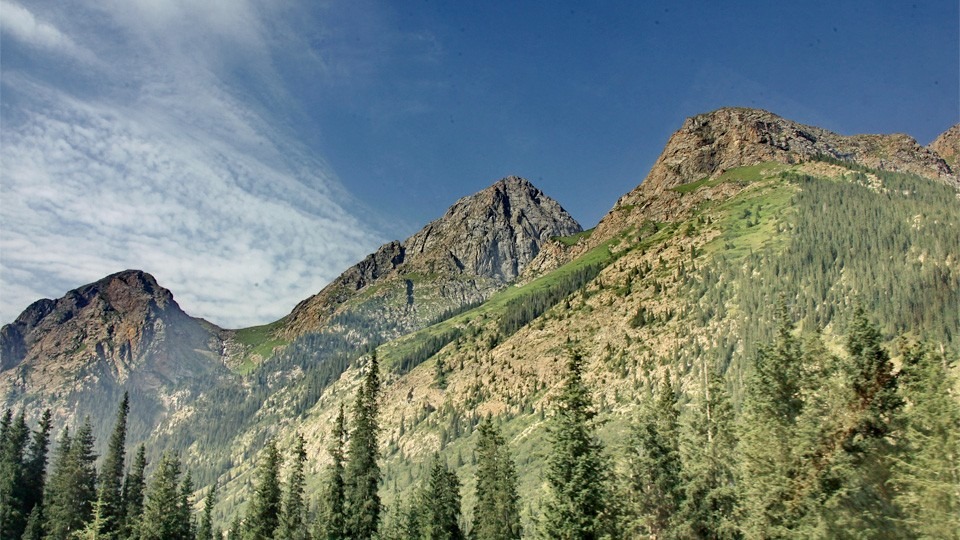
The Barskoon Gorge is located on the southern shore of the Issyk Kul Lake, above the Barskoon village, 90 km from Karakol that is one of the most beautiful gorges on the southern shore of Issyk-Kul, famous for high waterfalls unique names, such as ‘Tears of the Leopard,’ ‘White Beard,’ ‘Splashes of Champagne,’ and ‘The Bowl of Manas’.
Did you know? In 1965, the first astronaut Yuri Gagarin visited this place and enjoyed its beautiful landscape. Two monuments were later installed in his memory.
Barskoon Gorge is very attractive for travelers both for its natural beauty and cultural attractions. Through the gorge runs the road to the Kumtor gold mine, and it is noteworthy that in many small tributaries of the river can be seen the pieces of golden sand shining in the sun. Don’t miss a chance to miss it.
9. Issyk-Kul Lake
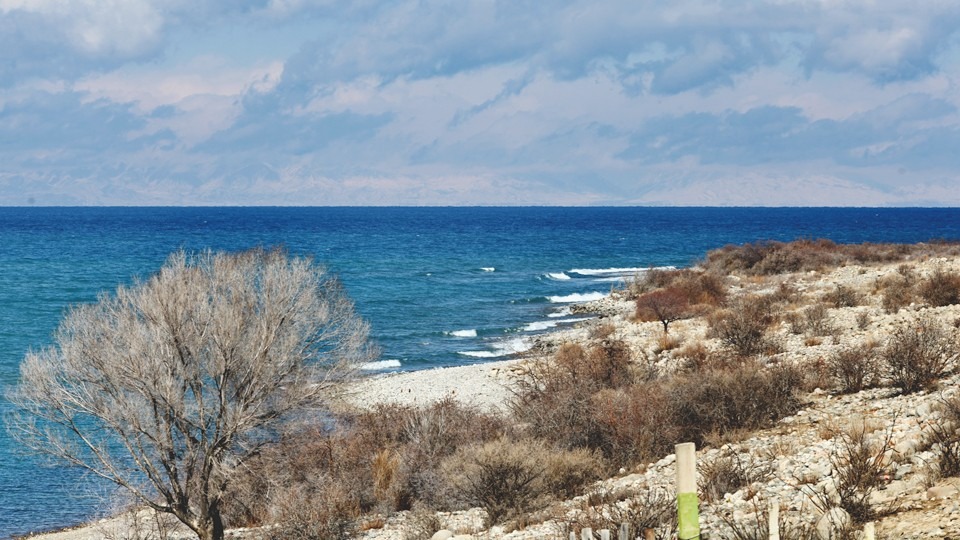
Issyk-Kul is an endorheic lake in the Northern Tian Shan mountains in Eastern Kyrgyzstan surrounded on two sides by the Terskey Alatoo and Kungey Ala-Too ranges.
The extraordinary diversity of landscape types around Issyk-Kul Lake offers ideal living conditions for a great number of plant and animal species. It is widely believed that the name Issyk Kul in Kyrgyz means ‘hot lake,’ because the water in the lake never freezes. The name of the lake also bears religious significance.
Characteristic are the high mountain valleys, the so-called syrts, high mountain mats with rich flower-bloom, and the vast high plateaus with traditional pasture. Issyk-Kul Lake is one of the largest and deepest alpine lakes in the world.
The coast is famous for its exceptional landscape and particular maritime climate. It is also the largest health resort zone in Central Asia, with numerous health resorts, hotels, and private guest houses, making it a top destination.
10. Chong Ak Suu Gorge
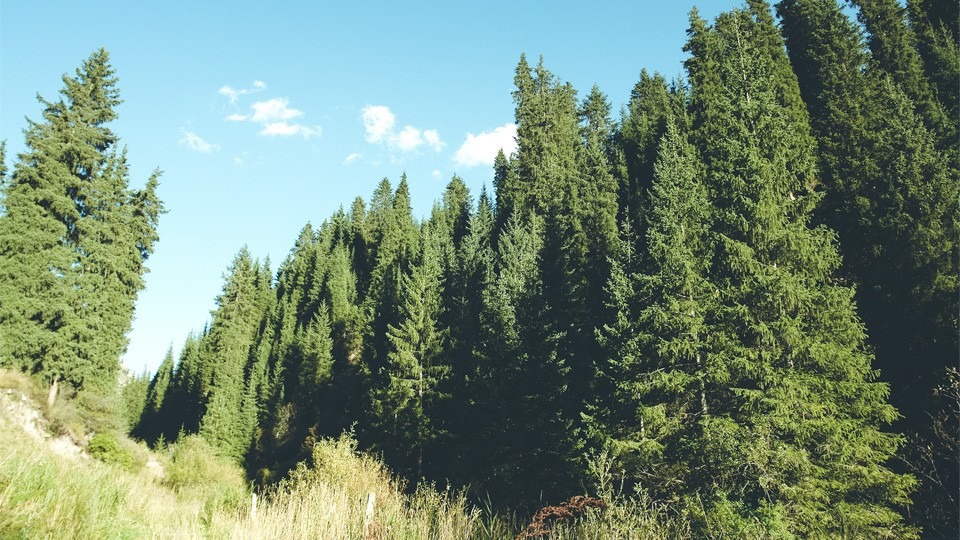
Located on the northern shore of the Issyk-Kul Lake, on the slopes of Kungei Ala-Too, covered with lush green grass and pine forests, 60 kilometers from the city of Cholpon-Ata, Chong Ak Suu Gorge is one of the most popular tourist destinations of Issyk-Kul where its three beautiful moraine lakes are among the main attractions of the gorge.
The slopes of the gorge are quite flat, covered with forests of conifers. At the bottom of the gorge, there is a river, carrying streams of glacier water. Wild sea buckthorn, raspberry, and barberry grow on its banks.
From June to September yurts are set in Chong-Ak-Suu, the inhabitants of which welcome travelers and help them to get acquainted with the nomadic way of life.
If your dream is to spend a night in yurts then I definitely suggest you visiting Chong Ak Suu Gorge while traveling to Issyk-Kul.
11. Ornok Petroglyphs
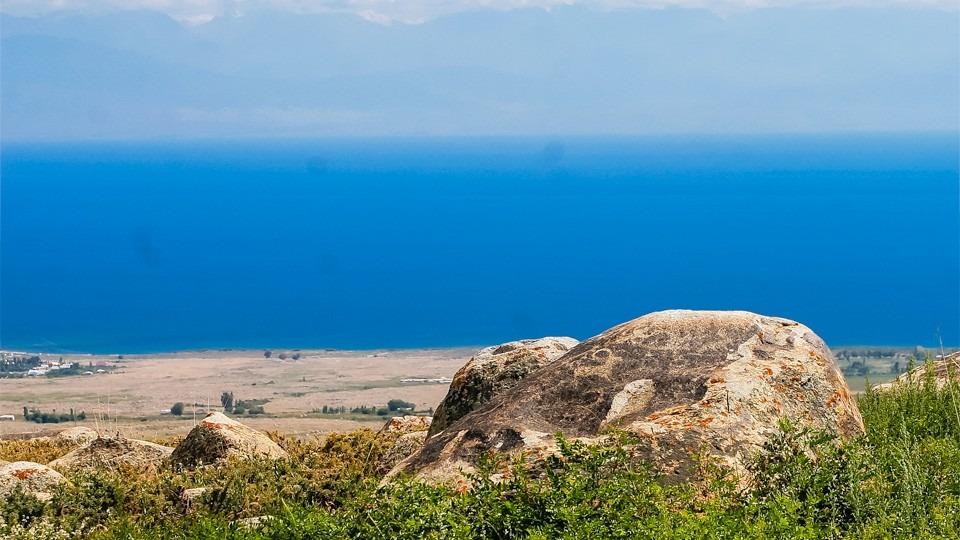
The outskirts of the Ornok village, in the Issyk-Kul province, host priceless historical monuments, such as petroglyphs and burial mounds. Ornok is a kind of real open-air museum, keeping the exhibits of bronze and iron ages, as well as the early Middle Ages.
These exhibits are petroglyphs put on the surface of more than 2000 stone boulders where you can find the images of ancient humans and animals such as the mountain goat with curled horns, deer – the totemic animal of the local tribe Bugu, dogs, leopards, horses, camels.
In addition to the petroglyphs in the archaeological complex, Orn’ok can also be found mounds and fragments of ancient buildings. So, even if you slept through history class, there is something mysterious and timeless about petroglyphs – puzzling over the messages, events, and culture communicated to us from ancient peoples and civilizations in the village of Ornok.
Ornok is unique in that its petroglyphs depict a great deal of detail in regards to clothing and costumes as well as warriors engaged in battle. As a bonus, you can see the remains of ancient structures and burial mounds at Ornok as well.
12. Manjyly-Ata Valley

The Manjyly-Ata Valley, also called the Valley of Sacred Springs, is located on the southern shore of Issyk Kul Lake between the Kaji-Sai and Tong villages.
Known as the Valley of Sacred Springs for the 17 larger springs that reside there that are rumored to contain miraculous, healing properties. Some of the springs are said to help treat various diseases while others are said to bring happiness and wealth.
The valley is just cut up by many gorges, located between the clay hills. The Manjyly-Ata Valley was named after a wise healer named Manjyly who would help cure people of various illnesses and diseases. Since medicine was not available during his time, he would procure herbs and other natural forms of treatment for the sick. When he died, the place he was buried is said to have burst forth with these springs that have healing properties. Each spring is said to cure a different ailment. But now the Manjyly Ata Valley is considered a sacred place of pilgrimage.
If you liked this article, then please subscribe to my YouTube Channel for Travel Adventures. You can also follow my adventures on Twitter and Instagram.

